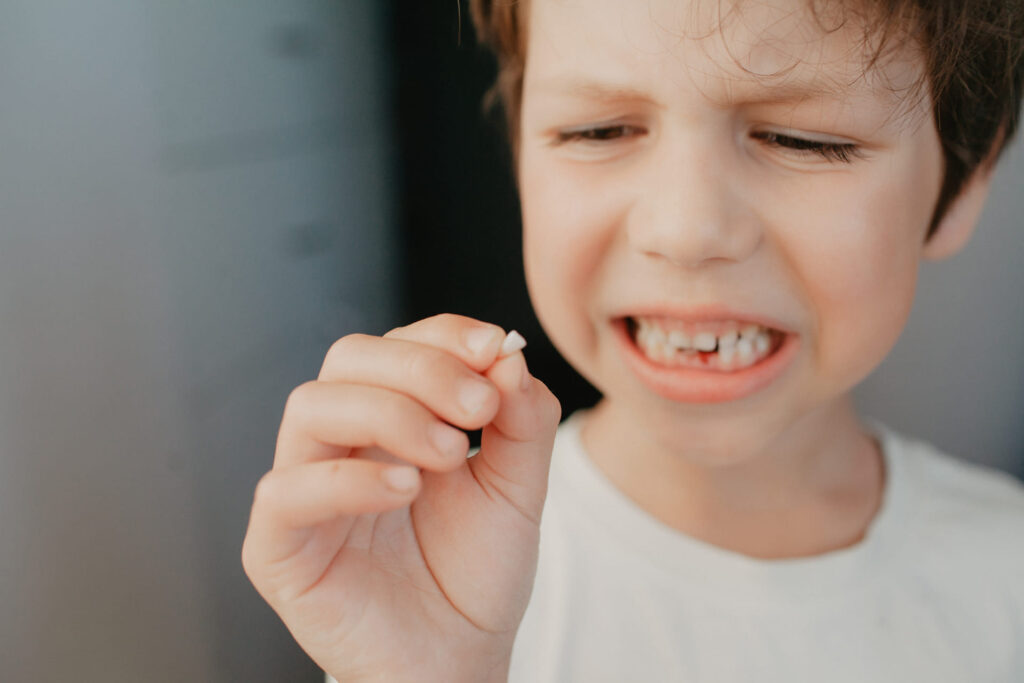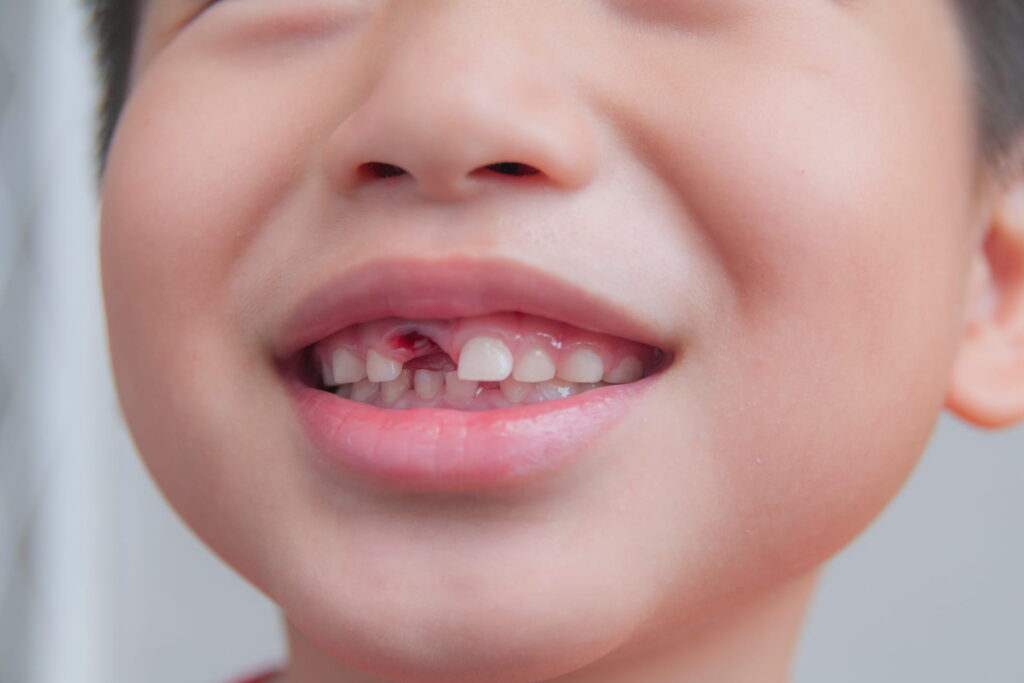When a child knocks out a tooth, it’s a moment filled with panic for both the child and the parent. The immediate rush of questions and concerns can be overwhelming: What’s the right step? Is the tooth savable? Who should I call? This guide aims to navigate the choppy waters of such a pediatric dental emergency with calm and informed actions that could potentially save your child’s tooth and ensure their oral health remains intact.
Immediate Steps
Find the Tooth
The first step is to locate the tooth. It’s crucial to handle the tooth carefully, touching only the crown (the part that’s visible when in the mouth) to avoid damaging the roots.
Clean the Tooth Properly
If the tooth is dirty, gently rinse it with milk or water. Avoid scrubbing it or using soap, as this can cause further damage. The goal is to keep it as intact as possible for the dentist to examine.
Attempt Reinsertion
For older children who can understand and follow instructions, try to place the tooth back in its socket. This might sound daunting, but a gentle push back into place can sometimes be the best immediate action before getting professional help. However, this is not advised if there’s a risk the child might swallow the tooth.
When Reinsertion Isn’t Possible
Preserve the Tooth
If reinsertion isn’t an option, keeping the tooth moist is the next best step. Place it in a container with milk, saline solution, or saliva. This helps to preserve the cells on the root surface, which are vital for the reattachment process.
Avoid Common Mistakes
Common pitfalls include placing the tooth in water or wrapping it in a tissue. Water’s osmotic pressure can cause the cells on the tooth’s root to burst, while a tissue can dry out the tooth.

Seek Professional Help Immediately
Contact Your Pediatric Dentist
Time is of the essence in such situations. Contacting a pediatric dentist immediately can make a significant difference in the outcome. They can provide specific instructions over the phone and prepare for your arrival, ensuring the tooth receives the best possible care.
Emergency Services
In cases where a pediatric dentist isn’t immediately available, heading to an emergency room that offers pediatric dental services is advisable. They can offer temporary solutions or direct you to the right specialist.
Understanding the Importance of Pediatric Dentistry
Pediatric dentists play a crucial role in managing dental emergencies. Their specialized training in dealing with children’s dental issues makes them the go-to professionals for such incidents. Regular check-ups and a good relationship with a pediatric dentist can also help in preventing dental injuries by providing custom-fitted mouthguards for sports and educating on safe play practices.
Preventive Measures
Protective Gear for Sports
Mouthguards are an essential piece of equipment for children involved in any form of sports. They can significantly reduce the risk of dental injuries. The American Dental Association recommends the use of mouthguards in both practice and games to protect against knocked-out teeth and other dental injuries.
Educating Children on Dental Safety
Teaching children about the importance of dental safety can go a long way. Simple habits like not using their teeth to open things and being cautious during play can prevent accidents.
After an incident where a child knocks out a tooth, the actions taken in the moments following can significantly impact the tooth’s viability and the child’s overall dental health. According to the American Academy of Pediatric Dentistry, immediate reimplantation of avulsed (knocked-out) teeth increases the likelihood of saving the tooth. This highlights the importance of quick thinking and action in such emergencies.
Pediatric dental emergencies can be a test of a parent’s calm and quick decision-making. Knowing the right steps to take when your child knocks out a tooth is crucial. From finding and preserving the tooth to seeking immediate dental care, each action plays a pivotal role in the outcome of such incidents.

Key Takeaways for Parents in Pediatric Dental Emergencies
- Acting swiftly and calmly can save a knocked-out tooth.
- Knowing how to properly handle and preserve the tooth is crucial.
- Pediatric dentists are invaluable resources in emergencies and for preventive care.
- Educating children on dental safety and the use of protective gear can prevent injuries.
Research from well-known sources like the American Dental Association (ADA) and the American Academy of Pediatric Dentistry (AAPD) supports these steps and recommendations, offering a wealth of information on preventing and handling dental emergencies.
FAQs
Can a Knocked-Out Tooth Be Saved?
Yes, especially if reinserted within the first 30 minutes to an hour. The sooner a dentist can reimplant the tooth, the better the chances of saving it.
How to Prepare for Dental Emergencies?
Having a dental emergency kit, including a small container with a lid, saline solution, and the contact information for your pediatric dentist, can be helpful. Educating your family on what to do in case of a dental emergency is also crucial.
What Are the Long-Term Solutions if the Tooth Can’t Be Saved?
Pediatric dentists can offer several solutions, such as space maintainers to prevent misalignment of the remaining teeth or, in older children, dental implants once they’ve fully grown.
Should I Put a Knocked-Out Tooth in Milk?
Yes, milk is a good medium to preserve the tooth because it maintains the correct fluid balance in the root, helping to keep it alive.
How Often Should Children See a Pediatric Dentist?
The American Academy of Pediatric Dentistry recommends a dental check-up at least twice a year for most children. Regular visits can help prevent dental problems and ensure that children learn the importance of maintaining good oral health.
- About the Author
- Latest Posts
Dr. Jason Parker, a distinguished dentist based in New Orleans, was honored with the New Dentist Award by the Louisiana Dental Association in 2008 for his contributions to both the dental profession and the community. With a background in biology and business administration, Dr. Parker has been in private practice since 2001 and specializes in pediatric dentistry


